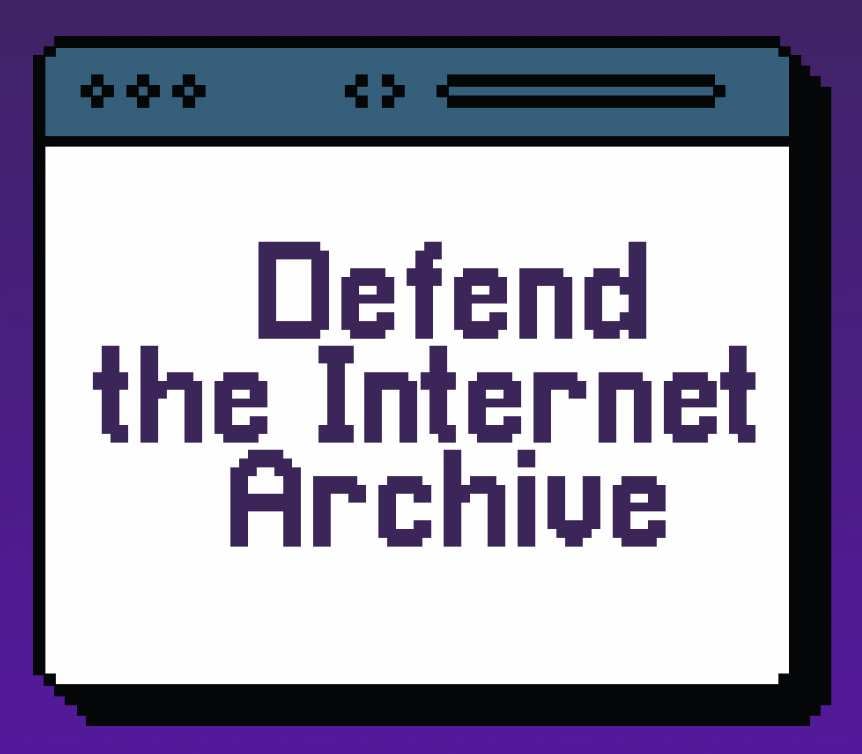Musician, mechanic, writer, dreamer, techy, green thumb, emigrant, BP2, ADHD, Father, weirdo
https://www.battleforlibraries.com/
#DigitalRightsForLibraries
- 12 Posts
- 156 Comments

 2·10 days ago
2·10 days agohttps://f-droid.org/packages/com.github.olga_yakovleva.rhvoice.android/
I user thus as a plugin for my epub reader.
I’m not sure what’s extenuating (maybe you meant extraordinary, which I still disagree with) about being in -20°F by herself when just barely past kitten stage. All scientific papers and opinions I’ve ever read about cats puts them at the least domesticated of human companions, able to survive without us just fine.
The domestic cat retains a behavioural repertoire that makes some individuals very successful when living independently of people, and all cat populations show a degree of genotypic and phenotypic flexibility that enables them to move between states within a few generations, or even within a lifetime (Bradshaw et al. 1999)
The states being referred to here are states of domestication versus true wildness.
The very recent history of ‘true’ domestication, beginning perhaps as little as ~200 years ago, means that domestic cats effectively remain genetically ‘wild’ (Tamazian et al. 2014). Few genomic alterations in domestic cats are attributable to domestica- tion, excepting genes affecting memory, fear-conditioning and reward learning (Montague et al. 2014). Domestic cats have retained the genetic basis for effective hunting (Bradshaw 2006), including sensory traits such as a broad hearing frequency range, high visual acuity and accentuated vomeronasal capacity (Montague et al. 2014).
ETA: links and quotes

 5·11 days ago
5·11 days agoYeah. The word really just breaks down to, “having been noticed widely.”

 13·11 days ago
13·11 days agoMainer here. Its great, except that the governor’s race is specifically exempted from RCV. May have something to do with GOP former governor LePage, but can’t recall before my morning meds…
indoor cats really struggle a lot if they ever get lost outside.
Curious by what you mean about struggling. Not trying to be simply contrary.
My (then) 16 month old, seven pounds wet with rocks in her pockets indoor cat escaped in 2018 and lived wild in rural Maine for 18 months before being trapped and returned to us (thanks to microchipping). She was 9 miles from home and had a broken paw (something fell on it and crushed her toes), but was otherwise healthy and in good spirits.
I tend to agree that a feral has an advantage based on common sense, but also that my tamed feral is a beast when he fights.
Edit: wrong quoted text

 14·13 days ago
14·13 days agoGlad to see this becoming more public. Been brewing for years now. Too bad they’re this way with the press, but as Steve points out, gaming isn’t important to them anymore. We got them where they are, but they found a golden goose with “ai,” and they’re milking (a goose?) it for all they can.
For all I care, Nvidia can disappear. The last/only Nvidia card I owned was the Geforce 2 GTS. I think I played Unreal Tournament or Quake 2 on it.

 5·13 days ago
5·13 days agoHave been using TrueNAS for 13+ years since the FreeNAS 9.x days. Can attest to its bulletproof-ness in my case.
Would second asking in the iX forums. I’ve managed to get replication help directly from iX staff before when using the forum. You shouldn’t have this issue, and you will find answers.
I’ve moved my disks to a completely new machine with fresh install and then import my config, reboot and everything is as it was. I’ve also done the same without my config and imported the pool with no problems, just need to recreate shares, and any jails (a feature which I no longer use) would need to be reconfigured to be 100% functional.
There only problem being that 90% of webpages fail to load properly without JS, not to mention the ones that depend on features that aren’t available LW enhanced protection enabled. Each page I visit, I have to create exceptions or they sit there blank.

 7·3 months ago
7·3 months agoI agree that I was confused at first, until I remembered that any of the coalition countries (7 eyes?) has access to anything secret, they share with others that don’t.

 2·5 months ago
2·5 months agoThese are useful data for making decisions about using their service, but not exactly indicative of support for a right wing authoritarian leader who lies more in one day than he has hairs on his entire body.
Edit: typo

 17·10 months ago
17·10 months agoThis is a great post! I don’t use immich; I use ente.io and I don’t host it, but I do know they use OSM, as confirmed in #14 of their privacy policy:
Open Street Maps
- Use-case: Maps and geodata
- Privacy Policy: https://wiki.osmfoundation.org/wiki/Privacy_Policy
- Contact: privacy@osmfoundation.org
I don’t self host presently, but if I get my server hardware back (moved out of the country a while) I want to dabble with a self hosted photo solution, so I’m glad to have found your post that keeps this fresh in my mind.
They also don’t always keep the metadata in the same archive (zip or tar) with the pictures they belong with, and that can throw off imports with tools that process Google Takeout archives directly. Its a pretty nasty solution, for real.
I moved about 140GB to ente.io before they had their newer takeout process, but some destinations can enable third party apps (like rclone) to do cloud to cloud. Nor sure which work best, since I couldn’t go that route myself.

 581·11 months ago
581·11 months agoBack in the 1980’s they told me it’d trickle down.
…eventually.

 16·11 months ago
16·11 months agoLibrewolf supports Mozilla sync

 1·11 months ago
1·11 months agoOkay, I do recall that our software had a feature that could classify on "DHCP requested options’, but it was low-fidelity, unreliable. Ultimately, the software works best with known devices, and isn’t very good at reliably classing unknowns.
As you say, just the first few seconds of actual traffic from a device is so rich in terms of ID characteristics compared to DHCP.

 4·11 months ago
4·11 months agoI used to provide commercial end-user support for a network intelligence product that used as much metadata as possible to help classify endpoints, shuffling them off to the right captive portals for the right segment based on that data.
I can tell you that the things you’re saying are transmitted in a DHCP request/offer are just not. If they were, my job would’ve been a LOT easier. The only information you can count on are a MAC address.
I can’t view that link you shared, but I’ve viewed my share of packet captures diagnosing misidentified endpoints. Not only does a DHCP request/offer not include other metadata, it can’t. There’s no place for OS metrics. Clients just ask for any address, or ask to renew one they think they can use. That only requires a MAC and an IP address.
I suppose DHCP option flags could maybe lead to some kind of data gathering, but that’s usually sent by the server,not the client.
I think, at the end of the day, fighting so that random actors can’t find out who manufactured my WiFi radio just isn’t up there on my list of “worth its” to worry about.

 1·11 months ago
1·11 months agoEoL? They’re releasing betas regularly and announced 13.3 for Q2. You mean how they’re sort of winding down with scale taking the bulk of dev cycles? Not much to change with the platform, and security fixes will be backported to CORE. I think SCALE still doesn’t fit my use-case, hut when it does, and jails go away with CORE, I’ll shed a tear and pour one out for my homie.






I completely agree. I thought Plex would be fast in the collective rearview mirror as soon as they started forcing connections to their servers, pay-walling, etc. I also had issues with the database corrupting and causing huge slowdowns. I spent days trying and failing to preserve my ratings, watch data, etc.
In the end, I switched to a much simpler setup of an NFS/CIFS share accessed by Kodi on my Nvidia Shield TV. If Kodi chokes (happened once since 2017), I can just wipe the app and/or reinstall and then import the local metadata (XML or NFO IIRC). That takes about five minutes. It just works. Kodi also gives me access to the IAGL, so that’s a huge plus.